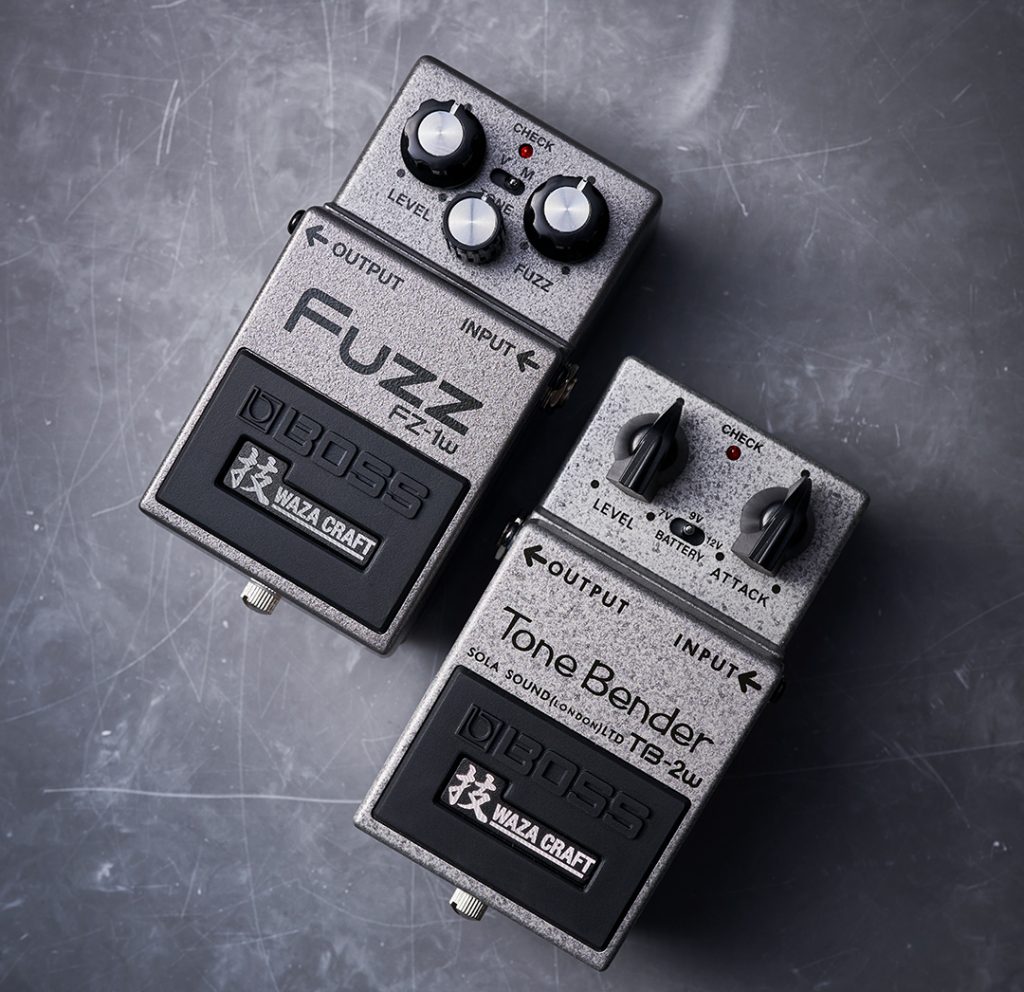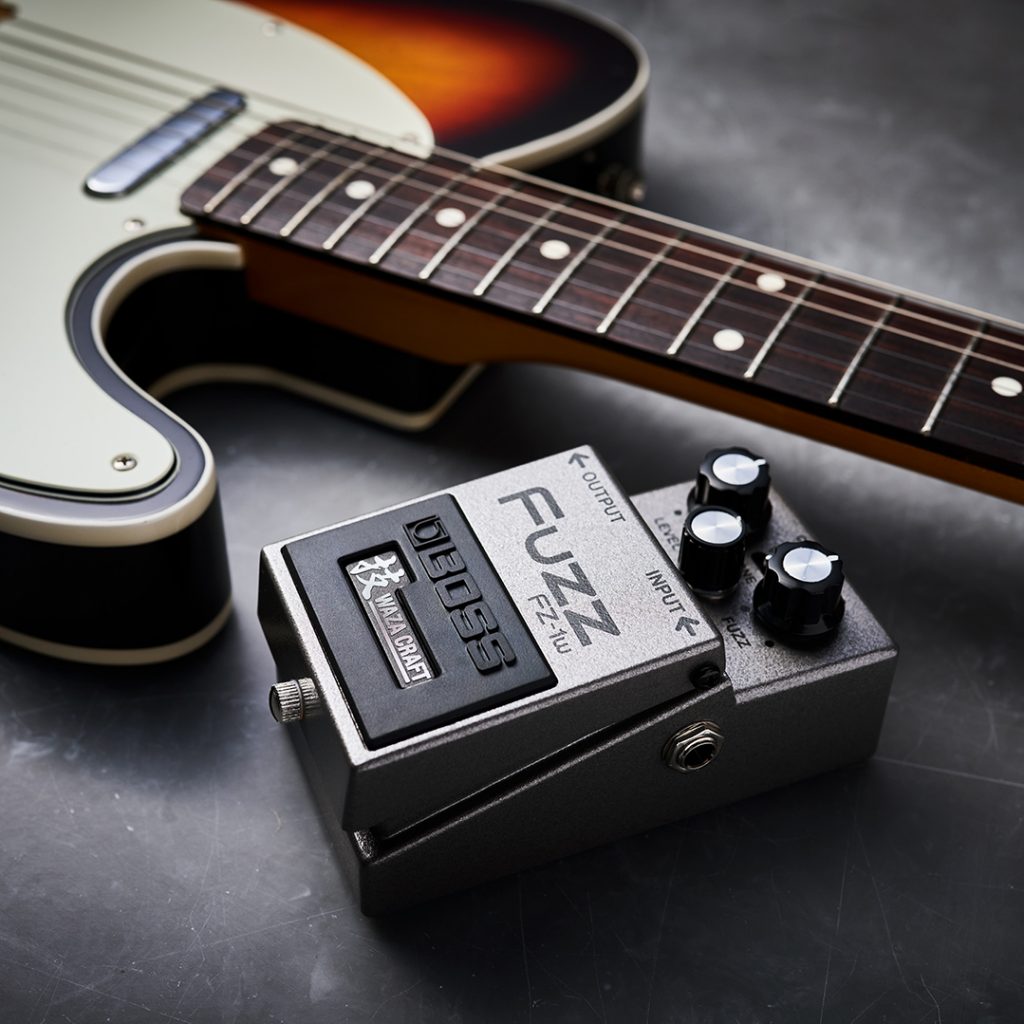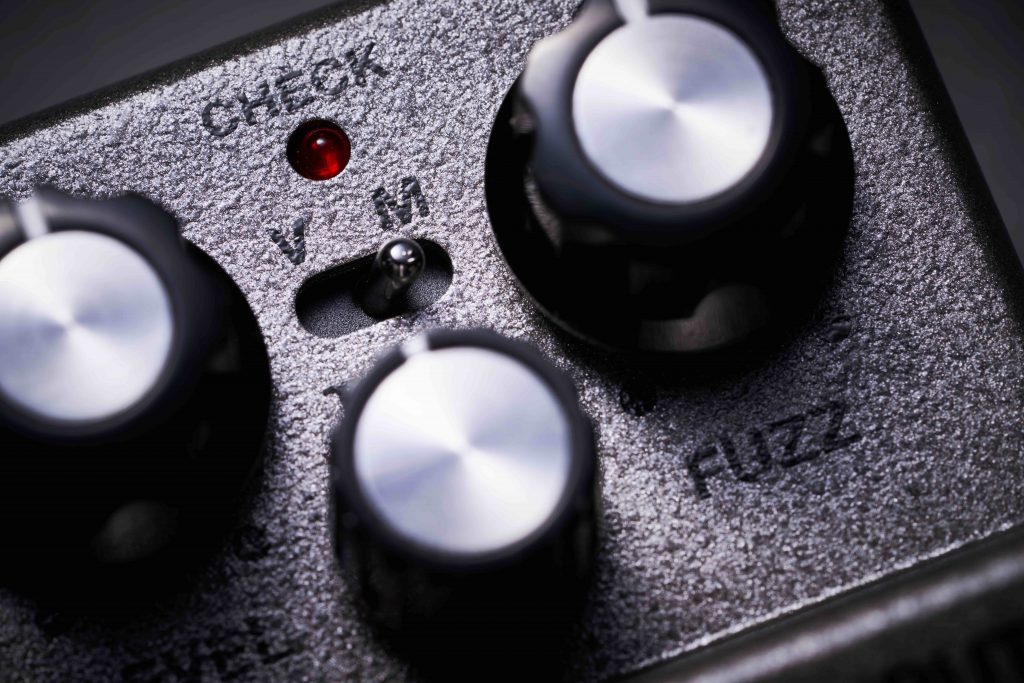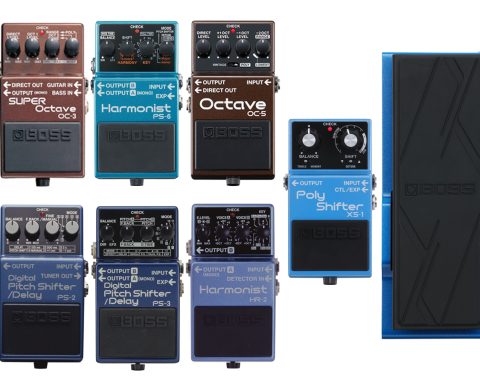The arrival of a new Waza Craft pedal is always a cause for celebration. Sometimes the models expand the tonal range of a metal classic like the HM-2W; other times, they’ll bend time as with the DC-2W. Waza means “carefully selected analog components, refined circuitry, and meticulous attention to detail.” Regardless of style, all Waza Craft pedals grew out of classic BOSS designs. Until now. The FZ-1W Fuzz is an entirely new pedal with a fresh take on the sound of vintage 1960s units—reimagined for modern players. Let’s take a look at how the FZ-1W came to be.
A Fuzzy History
BOSS is synonymous with distortion and overdrives of all kinds. From creamy classics like the SD-1 and OD-1 to heavy hitters like the HM-2 and MT-2, there’s no gain shortage in the company’s history books. Still, as an effect, fuzz is a unique sonic beast, and BOSS has been no stranger to this wild and wooly subgenre of distortion. Over the years, pedals like the FZ-2, FZ-3, and the popular FZ-5 delighted fans of unbridled ’60s-style fuzz. However, it was the TB-2W that paved the way for the latest innovations of the FZ-1W.
"The FZ-2 was kind of a Japanese vintage fuzz. We were trying to make something with different roots." -Yoshi Ikegami
While all the FZ pedals share their distinctive silver color, that’s where the similarities end. “The FZ-2 was kind of a Japanese vintage fuzz sound,” BOSS president Yoshi Ikegami says. “This time, we were trying to make something with different roots, like a Tone Bender.”

Developing the FZ-1W
The unique collaborative process behind the limited-run TB-2W Tone Bender was a breakthrough for BOSS. “Working with Sola Sound, we felt the passion as fans,” Ikegami remembers. “Anthony Macari gave us a lot of learning points, so that project had a huge impact. That’s why we decided to make FZ-1W at this time.”
Research played a huge role in crafting the TB-2W and led to the FZ-1W. “We investigated a lot of vintage fuzz circuits and the sounds of the Tone Bender MK I and MK II,” Ikegami reveals. “We wanted to make our dream vintage sound.” That reverence for the past even shows up on the FZ-1W itself. Indeed, the unit has a “1” in its name to show “respect for the classic circuits that helped shape the sound of rock guitar.”
"We investigated a lot of vintage fuzz circuits and the sounds of the Tone Bender. We wanted to make our dream vintage sound."
-Yoshi Ikegami
Accessibility was another factor, as the short TB-2W run led to scalping and long waits for eager fuzz fans. Ikegami was not pleased. “I was really disappointed about the scalpers,” he admits. “We only shipped around 3000 units of the TB-2W. This time we wanted there to be no hassle to get a pedal.”
Above all, the end goal for BOSS was to create a fuzz that gave players increased gain, less noise, and more power to shape their tone. The FZ-1W makes good on these ambitions and more through several innovations.

A Question of Stability: #SiliconFuzz
Guitar players revere BOSS for its roadworthy, consistent products. Both silicon and germanium transistor types possess appealing sonic qualities. Still, the choice was clear this time out. To keep production and quality stable, the FZ-1W features silicon, not germanium transistors. “We tried to make a circuit with germanium transistors. But silicon transistors provided much more stable sound and response behavior,” explains Ikegami. There were some sonic advantages as well. “Germanium is low gain and silicon has much more gain. That’s a big difference.”
"Temperature and battery voltage change the sound with germanium transistors. Silicon is stable and easy to make in larger quantities."
-Yoshi Ikegami
Providing reliable tone and response in any environment or operating condition is no easy task for vintage pedals. Ikegami elaborates on the issue. “Outside temperature and battery voltage change the sound with germanium transistors,” he says. “Silicon transistors are stable and easy to make in larger quantities. That’s much better for mass production.” It’s a whole new vibe—call it #SiliconFuzz.
A Matter of Modes
While many Waza Craft pedals feature a switch for toggling between standard mode and custom mode, once again the FZ-1W breaks from the line’s norms. “The FZ-1W has two different modes: vintage and modern,” Ikegami explains breaking down the unit’s layout. “Vintage mode provides a very vintage sound, but Modern mode is much more high-gain.” The FZ-1W’s Vintage mode has what Ikegami calls an “authentic fuzz” voice with a wide expressive range.
Plus, due to the inherent stability of the FZ-1W circuit, both Vintage and Modern modes offer low noise and stable behavior. “Extreme sensitivity to input volume means we are providing much more dynamic expression,” Ikegami says. “That is an important point for a good musical instrument.”
"Extreme sensitivity to input volume means we are providing much more dynamic expression." -Yoshi Ikegami
Tone Traits and Tricks
He is also quick to point out the wealth of options the FZ-1W Tone knob affords in both modes. “We gave a different tuning to Modern and Vintage mode,” he says. “Modern mode doesn’t lose mid character, so you can control the high-frequency and low frequency at the same time.”
He goes on to detail some of the characteristics of Modern mode. “Modern mode is a higher gain fuzz. The mid-focus provides a bolder, more powerful tone for today’s musical styles.” Ikegami shares some sweet spots he uncovered in the development process. “If you turn the fuzz knob over three o’clock, you get a very rich distortion. And if you turn down your guitar volume, you can get crispy, clean, crunch sound.”

The Future of Fuzz
There’s no doubt that the FZ-1W is an important new chapter in the Waza Craft tale. Ultimately, the new pedal is all about harnessing the expressive power of fuzz. It does so without any of the customary drawbacks of the effect. For Ikegami, it all comes down to playability. “A good fuzz sometimes works like a preamp. It doesn’t immediately give high gain,” he says. “Vintage mode and Modern mode both have a sensitivity to input volume. You can gradually change the gain very smoothly.”
"A good fuzz sometimes works like a preamp. It doesn't immediately give high gain."
-Yoshi Ikegami
This all adds up to a unit that Ikegami believes builds on the past but positions BOSS fuzz to look to the future. “Learning about vintage fuzz and how to use it, we decided to redefine vintage.” Ikegami is visibly proud of the results. In a recent BOSS Talk episode, he shares tone recipes and dishes details on the fuzz journey. “I’m confident to recommend the FZ-1W,” he says with a smile.
Designing the FZ-1W
An Exclusive Conversation with BOSS Engineering
What were the general challenges of developing the FZ-1W?
BOSS: Designing the circuit without spoiling the essence of vintage fuzz was a challenge. When you reproduce a vintage circuit with modern parts, it doesn’t always achieve the best result.
Were there musical or technological inspirations you referenced while working on the pedal?
BOSS: The development of the TB-2W was a big trigger that influenced us to develop this fuzz. BOSS saw the magic of the Tone Bender and saw why vintage fuzz remains beloved over five decades. It encouraged us to combine the best of vintage fuzz nuance and feeling for this modern era.

Instead of Standard versus Custom, the FZ-1W has Vintage and Modern modes. What was the engineering process like while developing these modes?
BOSS: Silicon transistors inspired us to explore further possibilities for fuzz. We focused on developing Vintage mode first to condense the best element of vintage fuzz. Modern mode allowed us to use beneficial characteristics of silicon transistors, like higher gain.
The Tone on the FZ-1W is a unique and responsive knob that allows players to enhance brightness without altering the midrange. How did it come about?
BOSS: Typically, fuzz contains strong high-frequency characteristics. These sometimes cause harsh sounds, depending on the combination of guitar or amp. We knew the Tone control was essential to this pedal and wanted to make it versatile for any environment.
We went through a lot of trial and error to find the ideal setting and not choke the sweet spot of tone for each mode. The tuning and behavior of Vintage and Modern modes are completely different.

Were there any surprises during the FZ-1W development process?
BOSS: We tried many vintage fuzz pedals. The differences in feeling, response, and reactiveness to guitar volume between units were massive, even for the same model. It’s also a common story among fuzz fans that room temperature and voltage will affect the sound. If we found a nice setting, it could get changed by the next morning.
In addition, keeping pedals in good condition is difficult with vintage fuzz. But the FZ-1W always stays in the best working condition anytime, anywhere. That’s a big advantage for modern usage.







